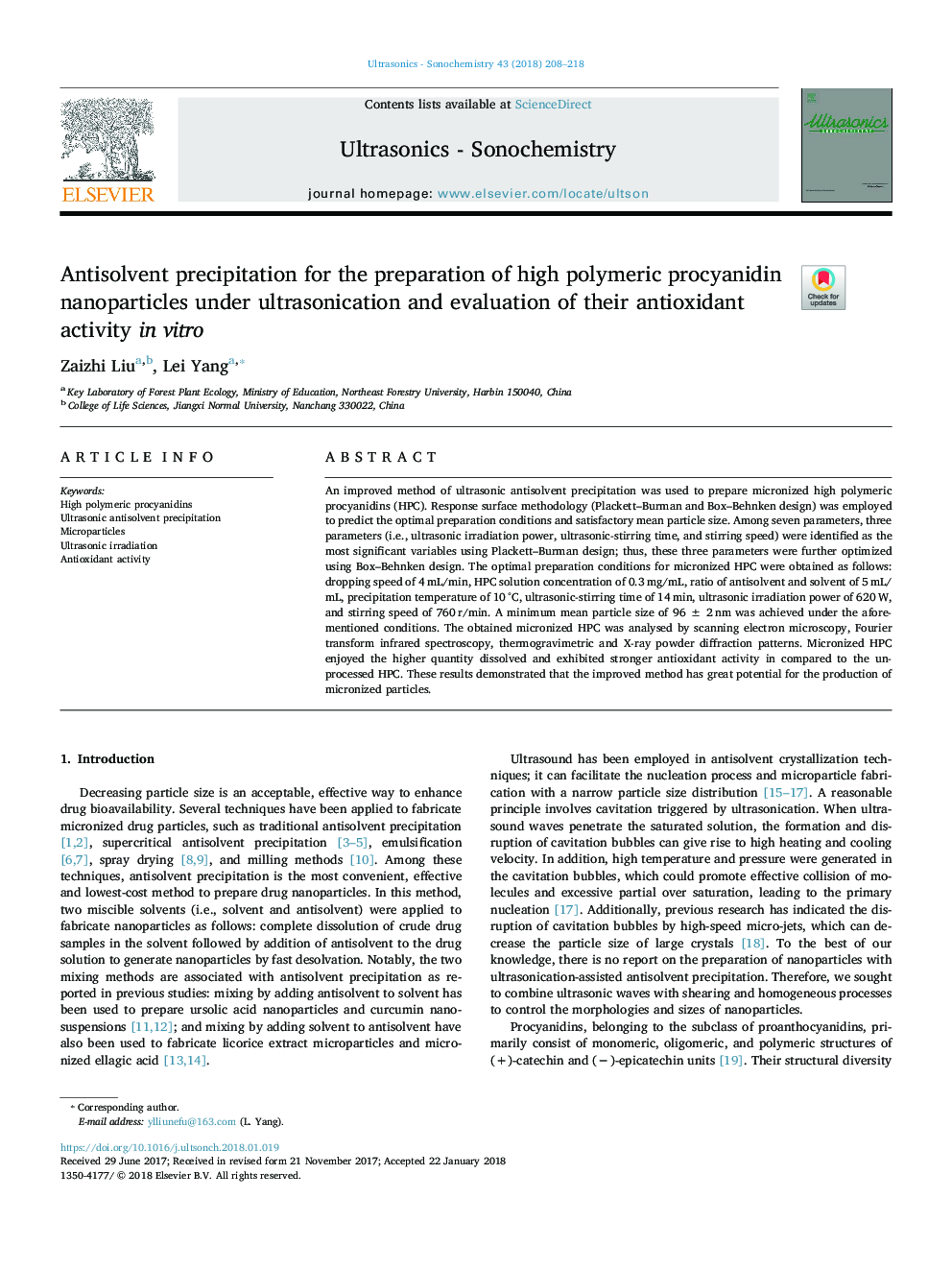| Article ID | Journal | Published Year | Pages | File Type |
|---|---|---|---|---|
| 7703087 | Ultrasonics Sonochemistry | 2018 | 11 Pages |
Abstract
An improved method of ultrasonic antisolvent precipitation was used to prepare micronized high polymeric procyanidins (HPC). Response surface methodology (Plackett-Burman and Box-Behnken design) was employed to predict the optimal preparation conditions and satisfactory mean particle size. Among seven parameters, three parameters (i.e., ultrasonic irradiation power, ultrasonic-stirring time, and stirring speed) were identified as the most significant variables using Plackett-Burman design; thus, these three parameters were further optimized using Box-Behnken design. The optimal preparation conditions for micronized HPC were obtained as follows: dropping speed of 4â¯mL/min, HPC solution concentration of 0.3â¯mg/mL, ratio of antisolvent and solvent of 5â¯mL/mL, precipitation temperature of 10â¯Â°C, ultrasonic-stirring time of 14â¯min, ultrasonic irradiation power of 620â¯W, and stirring speed of 760â¯r/min. A minimum mean particle size of 96â¯Â±â¯2â¯nm was achieved under the aforementioned conditions. The obtained micronized HPC was analysed by scanning electron microscopy, Fourier transform infrared spectroscopy, thermogravimetric and X-ray powder diffraction patterns. Micronized HPC enjoyed the higher quantity dissolved and exhibited stronger antioxidant activity in compared to the unprocessed HPC. These results demonstrated that the improved method has great potential for the production of micronized particles.
Related Topics
Physical Sciences and Engineering
Chemistry
Chemistry (General)
Authors
Zaizhi Liu, Lei Yang,
